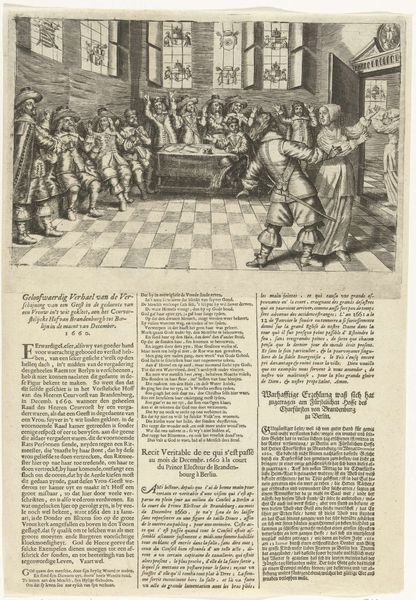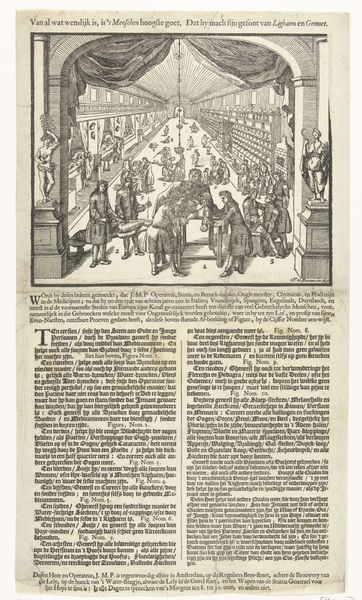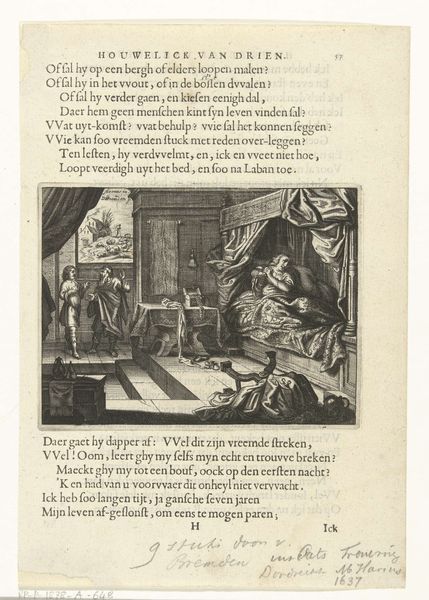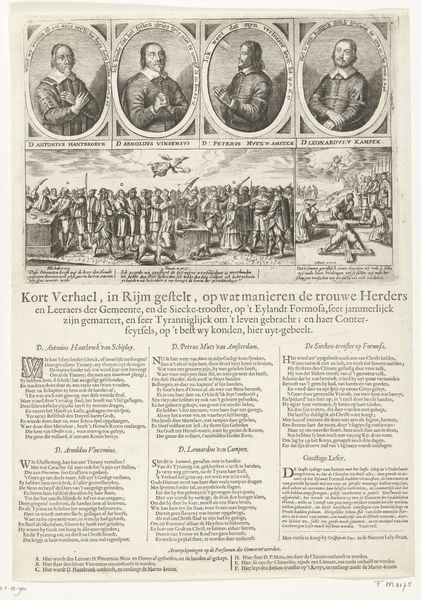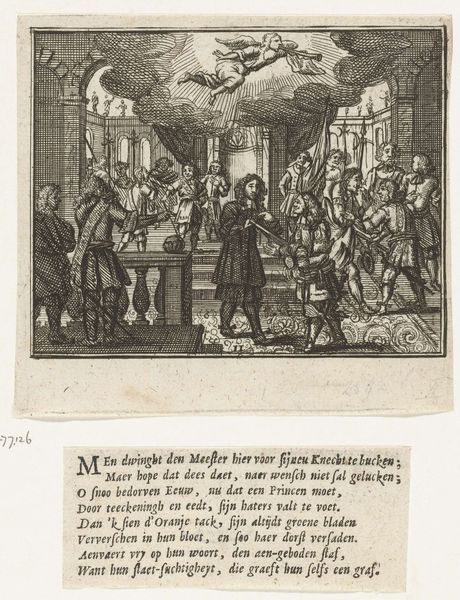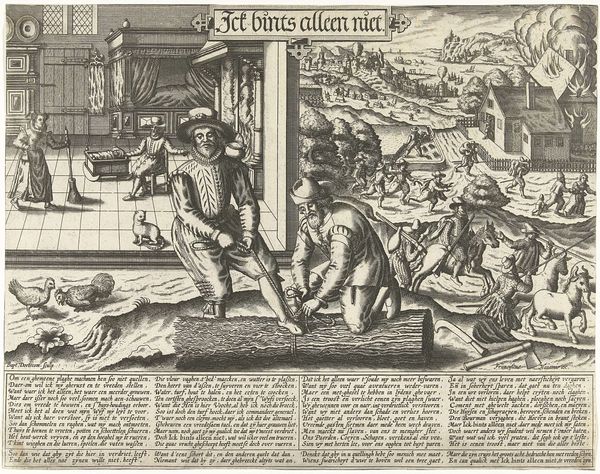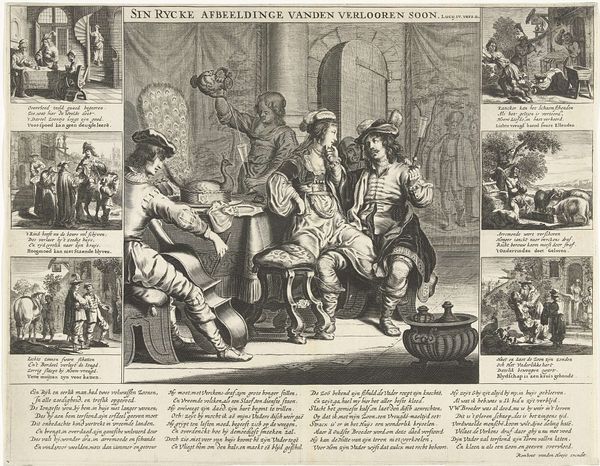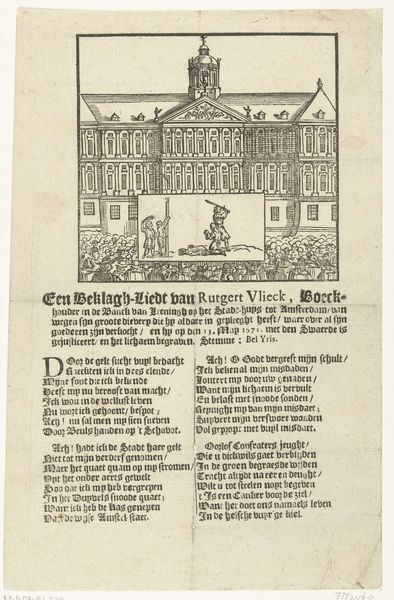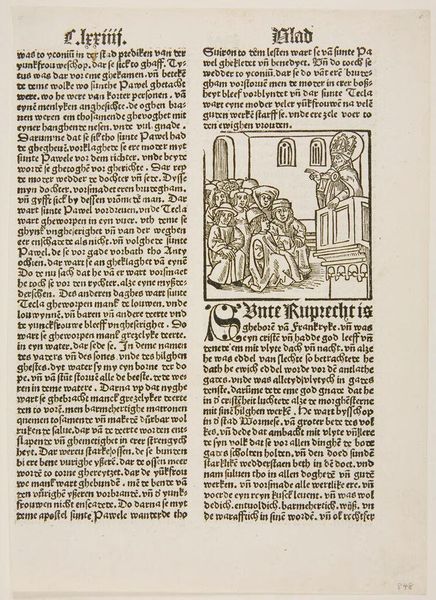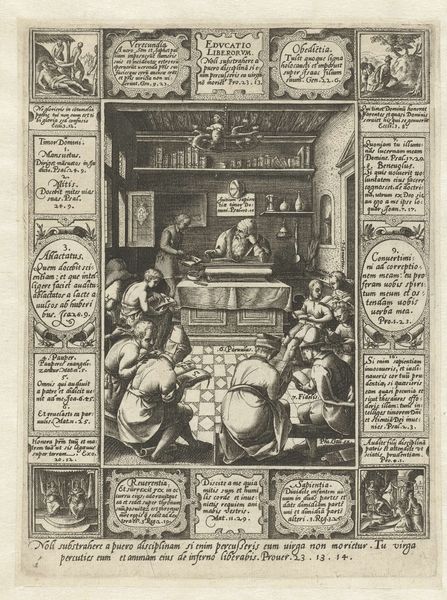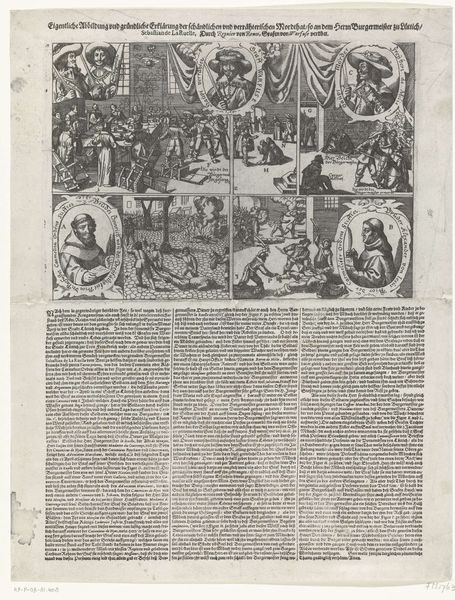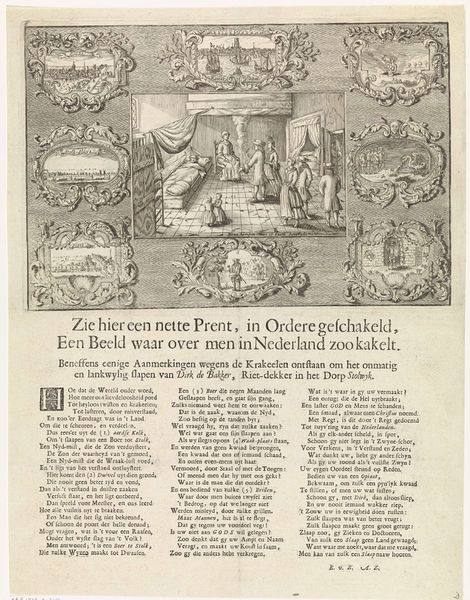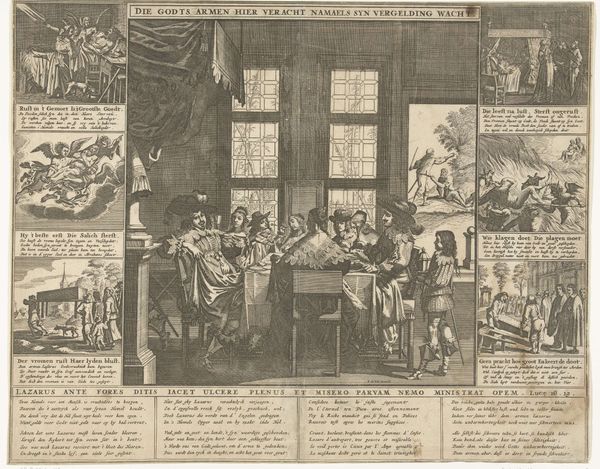
Moord door Abraham Boedijn en zijn dienstmaagd Klaesje Jans op hun kind, 1662 1663
0:00
0:00
print, engraving
#
baroque
#
dutch-golden-age
# print
#
history-painting
#
engraving
Dimensions: height 385 mm, width 259 mm
Copyright: Rijks Museum: Open Domain
Editor: Here we have "Moord door Abraham Boedijn en zijn dienstmaagd Klaesje Jans op hun kind, 1662," an engraving by Crispijn van de Passe the Younger. It's quite a disturbing image. I’m immediately struck by the stark contrasts of light and shadow. What do you see in this piece? Curator: The work is compelling. Considering the formal elements, notice how the artist employs the print medium to create distinct planes. Each area carries a symbolic load; in effect the piece presents an attempt at conveying a specific perspective. Editor: Could you elaborate? I'm having difficulty finding an initial entry point beyond its documentary purpose. Curator: Note the calculated positioning of elements. The interiors frame a narrative progression, drawing the viewer’s eye from the mundane, to the monstrous. Each spatial arrangement implies its function. Editor: That’s an interesting point. It's almost like a stage set, each section acting as a different scene. Curator: Precisely! Moreover, examine the formal correspondence of textual to representational information. Text acts as both content and frame: a clear structural imposition upon the messy world of human drama, would you agree? Editor: It becomes apparent how intricately woven it all is, the organization helps reveal a hidden point. Curator: That integration, which makes this such a compelling artifact is quite fascinating from both a design and intellectual standpoint. In examining the arrangement we can discern an intentional choice for that structural framework which helps convey information with that tone. Editor: I see how analyzing its structure enriches our comprehension. Thank you.
Comments
No comments
Be the first to comment and join the conversation on the ultimate creative platform.
